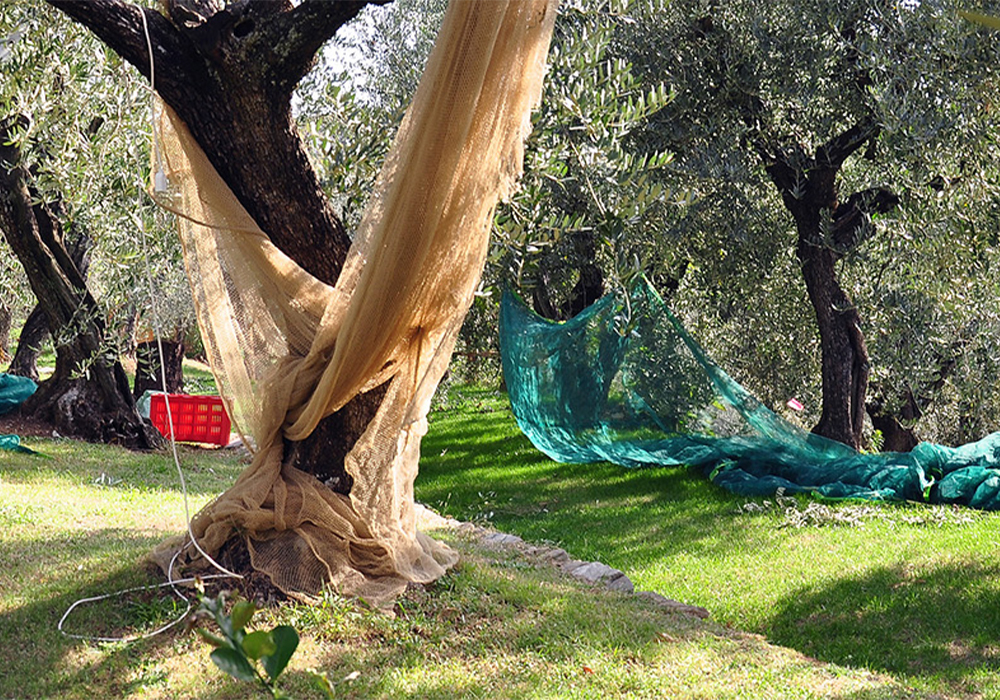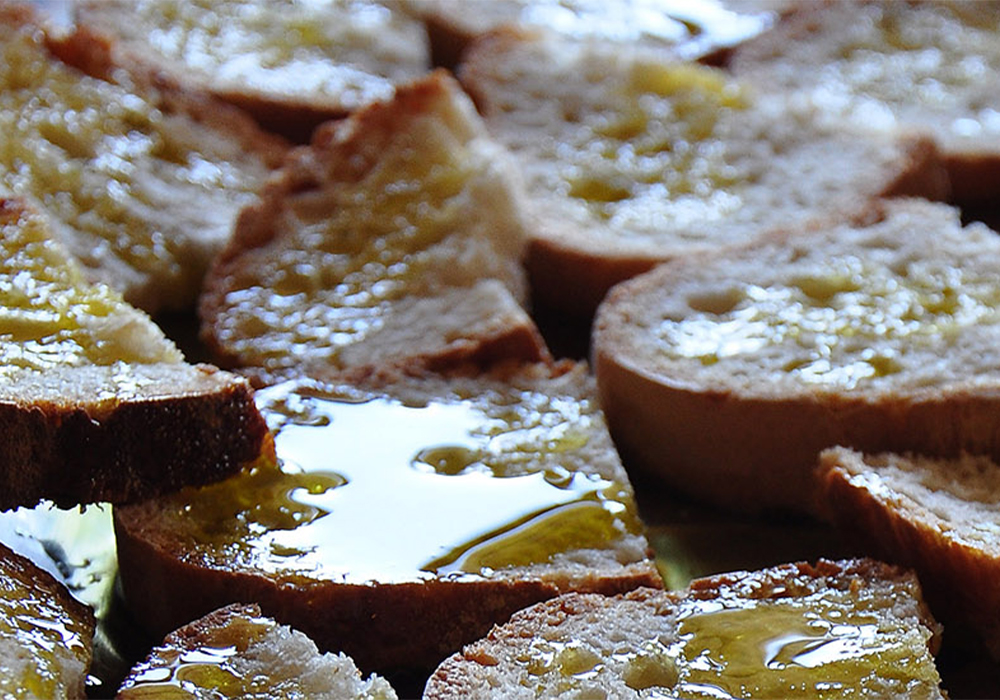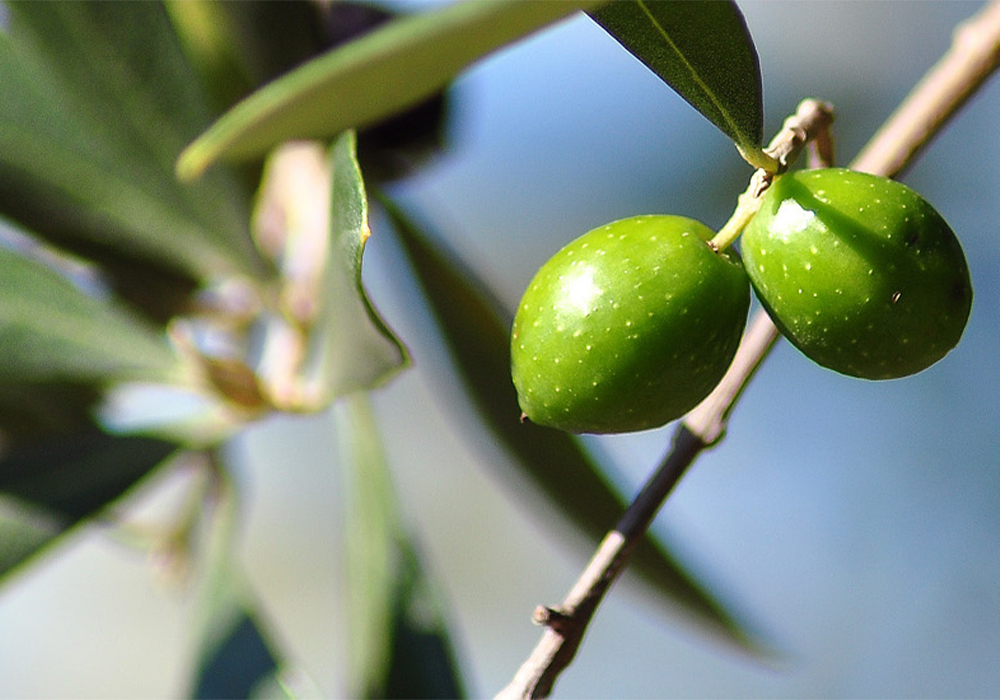
Extra Virgin Olive Oil
Although the correct dating of the origin of the oil remains shrouded in mystery, some experts trace it back to over 6,000 years ago in the Middle East where, at least originally, olive oil was used as a medicine or fuel for the fire of lamps.
Around 4,000 BC, the cultivation of the plant started in those lands, and around 2,500, the Babylonian code of Hammurabi dictated the first rules concerning the production and trade of olive oil.
Several centuries later and thanks to the Greeks, olive cultivation grew in importance and began to spread steadily in the Mediterranean basin. With the extension of the dominion of Rome in the Mediterranean, the development of olive cultivation became unstoppable with the spread of the plant in all the controlled territories.
With this new push, the various production processes improved with a consequent increase in the diffusion of the finished product, which also reached the tables of northern Europe.
With the collapse of the Roman Empire, olive cultivation fell for a long time in disgrace, and for centuries, the olive groves were present only in a few geographical areas, interrupting what until then seemed an unstoppable development.
Around the twelfth century, olive groves came to life in Italy thanks to the decisive impulse of the new commercial bourgeoisie, which, in addition to the pleasantness of the "final result", soon understood the economic value of the oil trade. Already in the 1400s, Italy had become the largest producer of olive oil with the offer of an extraordinary oil that embellished the Renaissance tables throughout Europe.
In Tuscany, the development of lands cultivated with olive trees was highly encouraged also thanks to the Medici family who decided to favor the transfer of hilly land to the Municipalities with the obligation to rent them at minimum prices if transformed into olive groves and vineyards.
Local trade spread rapidly, and olive cultivation grew with a conspicuous presence since the first half of the fifteenth century in the "Lucchesia" and plantations of real olive groves in the Pisan hills. Also in the fifteenth century, in the Pescia area, oil production exceeded 400 quintals allowing the first commercial exports to the surrounding areas.
In our land, the transformation of fields and hills into olive groves and vineyards grew relentlessly, and the olive tree spread throughout the territory from the hills around Siena to Arezzo to the wonderful lands that surrounded Florence. At the beginning of the fifteenth century, probably only Lucca had a production that allowed it to export oil but a couple of centuries later the oil from the rest of Tuscany also began to bring outside the regional borders through the port of Livorno.

The Tuscan extra virgin olive oil is well-known as the oil of absolute quality, which is characterized by a very strong link with the production areas. Starting from 1998, Tuscan Extra Virgin Olive Oil is protected by the Protected Geographical Indication according to what is established in the relative Production Regulations, which protects the product traceability and quality. The first condition for recognition as a PGI is that all stages of its production must take place strictly in the territories of the region.
Depending on the cultivation areas, Tuscan oil can have different organoleptic characteristics, with clear variations in flavors, offering the consumer a wide range of aromas, from fruity to bitter to spicy. Whatever its organoleptic characteristics, Tuscan oil is the excellence of our gastronomic tradition in Italy and in the world. It is delicious and healthy.
I almost always add a drop of raw EVO oil to my dishes. I choose different oils based on cooking and dishes.
Furthermore, I suppose you knew that it contains many vitamins that are excellent to "exploit" even for external use. If you add caustic soda, you get two components: soap and the unsaponifiable fraction, simply that part of the fat that does not saponify. This fraction is very rich in vitamins and is a real cure-all for the skin. You can also buy it in herbalists. In any case, having basically dry skin, I add a drop of EVO oil to my cream in winter.
Another idea? Take the coarse sea salt, add the EVO oil, and do a nice peeling on the whole body. If you do it in the tub, then fill it with hot water and enjoy this beneficial pampering: the salt helps eliminate excess fluids and the oil not only does not allow your skin to dehydrate but also has an emollient and nourishing action.

Around 4,000 BC, the cultivation of the plant started in those lands, and around 2,500, the Babylonian code of Hammurabi dictated the first rules concerning the production and trade of olive oil.
Several centuries later and thanks to the Greeks, olive cultivation grew in importance and began to spread steadily in the Mediterranean basin. With the extension of the dominion of Rome in the Mediterranean, the development of olive cultivation became unstoppable with the spread of the plant in all the controlled territories.
With this new push, the various production processes improved with a consequent increase in the diffusion of the finished product, which also reached the tables of northern Europe.
With the collapse of the Roman Empire, olive cultivation fell for a long time in disgrace, and for centuries, the olive groves were present only in a few geographical areas, interrupting what until then seemed an unstoppable development.
Around the twelfth century, olive groves came to life in Italy thanks to the decisive impulse of the new commercial bourgeoisie, which, in addition to the pleasantness of the "final result", soon understood the economic value of the oil trade. Already in the 1400s, Italy had become the largest producer of olive oil with the offer of an extraordinary oil that embellished the Renaissance tables throughout Europe.
In Tuscany, the development of lands cultivated with olive trees was highly encouraged also thanks to the Medici family who decided to favor the transfer of hilly land to the Municipalities with the obligation to rent them at minimum prices if transformed into olive groves and vineyards.
Local trade spread rapidly, and olive cultivation grew with a conspicuous presence since the first half of the fifteenth century in the "Lucchesia" and plantations of real olive groves in the Pisan hills. Also in the fifteenth century, in the Pescia area, oil production exceeded 400 quintals allowing the first commercial exports to the surrounding areas.
In our land, the transformation of fields and hills into olive groves and vineyards grew relentlessly, and the olive tree spread throughout the territory from the hills around Siena to Arezzo to the wonderful lands that surrounded Florence. At the beginning of the fifteenth century, probably only Lucca had a production that allowed it to export oil but a couple of centuries later the oil from the rest of Tuscany also began to bring outside the regional borders through the port of Livorno.

The Tuscan extra virgin olive oil is well-known as the oil of absolute quality, which is characterized by a very strong link with the production areas. Starting from 1998, Tuscan Extra Virgin Olive Oil is protected by the Protected Geographical Indication according to what is established in the relative Production Regulations, which protects the product traceability and quality. The first condition for recognition as a PGI is that all stages of its production must take place strictly in the territories of the region.
Depending on the cultivation areas, Tuscan oil can have different organoleptic characteristics, with clear variations in flavors, offering the consumer a wide range of aromas, from fruity to bitter to spicy. Whatever its organoleptic characteristics, Tuscan oil is the excellence of our gastronomic tradition in Italy and in the world. It is delicious and healthy.
I almost always add a drop of raw EVO oil to my dishes. I choose different oils based on cooking and dishes.
Furthermore, I suppose you knew that it contains many vitamins that are excellent to "exploit" even for external use. If you add caustic soda, you get two components: soap and the unsaponifiable fraction, simply that part of the fat that does not saponify. This fraction is very rich in vitamins and is a real cure-all for the skin. You can also buy it in herbalists. In any case, having basically dry skin, I add a drop of EVO oil to my cream in winter.
Another idea? Take the coarse sea salt, add the EVO oil, and do a nice peeling on the whole body. If you do it in the tub, then fill it with hot water and enjoy this beneficial pampering: the salt helps eliminate excess fluids and the oil not only does not allow your skin to dehydrate but also has an emollient and nourishing action.

Share on:
Powered & Designed by Passepartout


